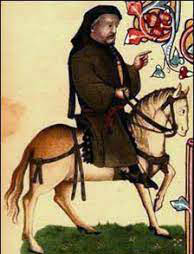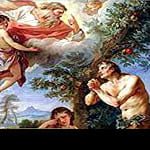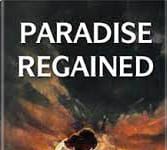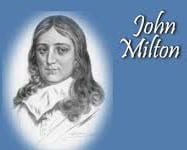Mock Heroic Elements in The Nuns Priests Tale
Mock Heroic Elements in The Nun’s Priest’s Tale
Mock Heroic Elements in The Nuns Priests Tale
A mock-heroic poem is one in which the subject is mean or trivial while the style of treating the subject is elevated. The author of such a poem makes the subject look ridiculous by wrapping it up in a framework that is utterly inappropriate to its nature. In brief, to say, a mock-heroic poem is a toy adorned with a royal robe. English literature is rich in heroic poems. Geoffrey Chaucer’s ‘The Nun’s Priest’s Tale’ is a gem among them that has enriched the storehouse of English mock-heroic literature. The subject matter of ‘The Nun’s Priest’s Tale’ is the seizing off a cock by a fox and the cock’s escape from the mouth of the fox. Evidently, it is a trivial subject because the seizing off a cock by a fox can under no circumstance be regarded as a matter of significance. But Chaucer dealts the subject with such an elevated style that it becomes a mock-heroic poem. Here is to say that elevated style refers to a style that is full of learned imageries comprising especially of long and novel similes, metaphors and other figures of speech and which is full of allusions and references from history legends, mythology, scripture, literature etc. which excite our sense of wonder, pleasure, gravity and thus give us heroic enjoyment. Geoffrey Chaucer has applied such elements to ‘The Nun’s Priest’s Tale’ in treating its trivial matter and developing it into a mock-heroic poem. Now let s bring out the mock-heroic elements of the narrative poem.
First, the poet uses his elevated style in describing Chauntecleer (the cock)’s merits and beauty through a series of similes as:
‘In al the land, of erowyng has his peer
His voys was murrier than the murie orgon
………..
His combs were redder than the fyn coral.’
In the above-quoted lines, we see that the poet has invoked a series of similes to celebrate the beauty of the cock as if the cock is not a cock but a national figure.
Secondly, good deals of allusions and references have been employed to analyze the significance of dreams seen by Chauntecleer. The poet makes references of Kenelm, Daniel, Joseph, the King of Egypt, the King of Lydia, and Andromache. Certainly, it is a source of satire to explain the significance of a dream seen by a mere cock with such important historical and Biblical figures. Besides this, the poet creates the problems of predestination and free will and has mentioned the names of some persons of worldwide fame as-Augustine, Bradwardine etc. which is absurd and inappropriate to the story of a cock and fox but they impart a mock-heroic tone to the story.
Thirdly, the mock-heroic elements have got an immense exhibition in the description of the lamentation of Pertelote while she saw Chauntecleer being carried off by the fox. The poet says:
‘Certes, swich cry ne lamentaion
Was never of ldyes maad whan Ylion
Was wonne…………’
Here the lamentation of the hens for Chauntecleer has been compared to that of the ladies and wives of King Priam when the Spartans seized Troy and brought a total destruction to it. Again the poet alludes to the lamentation of Husdrubal’s and Nero’s wives when they were killed to make an analogy between their lamentation and that of the hens. Those comparisons are incongruous but mock-heroic.
Fourthly, the poet invokes apostrophes of Venus, Destiny, God, and Christ in the poem to increase its gravity but really the use of such apostrophes has ridiculed the tale of the fox and the cock and excited our sense of laughter.
Fifthly, there are the references of Jack Straw, Peasant Revolt of 1381, and King James to make a comparison of the hue and cry made by the hens while Chauntecleer was carried off by the fox. These references are inappropriate to the story of a trivial theme of a cock and a fox. But the poet uses much force to fit it to the tale and thus increases the mock-heroic tone of the tale.
Sixthly, the chasing of the fox by the widow, her two daughters, and the household dogs and other animals is highly mocking. The poet gives vivid imagery of the chasing scene as follows:
‘And shoutying of the men and women eek
They ranne so hem thought hir herte breck.’
From the above discussion, we can come to the conclusion that the style of treating the subject matter of ‘The Nun’s Priest’s Tale’ is so much elevated that it uplifts the subject matter to a heroic level, but the tale is so trivial that the high style enhances the force of its lightness. So ‘The Nun’s Priest’s Tale’ may be called a higher specimen of a mock-heroic poem in the English language. 0 0 0.
Mock Heroic Elements in The Nuns Priests Tale
You May Like:
- ‘Poetry is the Criticism of LIfe’ Mathew Arnold-An Explanation
- Contributions of S T Coleridge to the History of Literary Theory and Criticism
Mock Heroic Elements in The Nuns Priests Tale
N. B. The article ‘Mock Heroic Elements in The Nuns Priests Tale’ originally belongs to the book entitled ‘Critical Essays on English Poetry‘ by Menonim Menonimus.
Mock Heroic Elements in The Nuns Priests Tale
Books on Literary Criticism by M. Menonimus:
- World Short Story Criticism
- World Poetry Criticism
- World Drama Criticism
- World Novel Criticism
- World Essay Criticism
- Indian English Poetry Criticism
- Indian English Poets and Poetry Chief Features
- Emily Dickinson’s Poetry-A Thematic Study
- Walt Whitman’s Poetry-A Thematic Study
- Critical Essays on English Poetry
- Tawfiq al-Hakim’s Novel: Return of the Spirit-An Analytical Study
- Tawfiq al-Hakim’s Novel: ‘Yawmiyyat Naib Fil Arayaf’-An Analytical Study
- Analytical Studies of Some Arabic Short Stories
- A Brief History of Arabic Literature: Pre-Islamic Period (500 AD-622 AD)
- A Brief History of Arabic Literature: Early Islamic Period (622 AD-661 AD) …
Related Search:
- Chaucer’s The Nun’s Priest’s Tale as Mock Heroic Poem
- Chaucer’s Art of Narration in The Nuns Priests Tale
- The Nun’s Priest’s Tale
- Chaucer Nuns Priests Tale as a Beast Fable
- The Canterbury Tales
- The Art of Characterisation of Chaucer
- The Art of Characterisation in Chaucer’s Canterbury Tales











